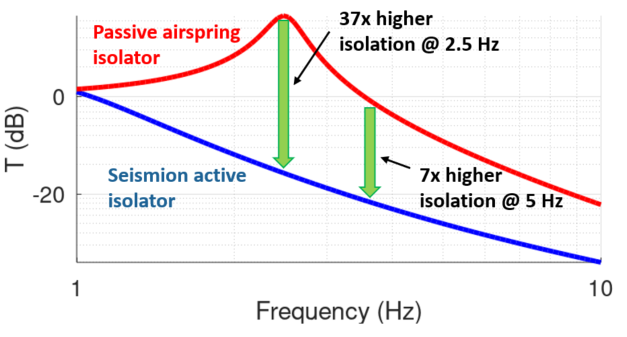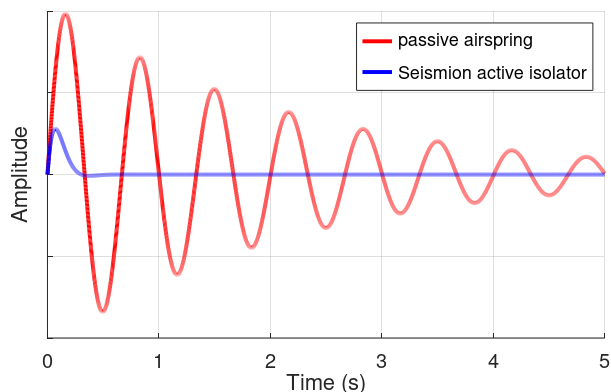The advantages of active vibration isolators compared to passive air spring systems
Passive vibration isolators are widely known and used in various fields of industry. They can be as simple as a rubber block, or rubber-metal-pieces. Or they are based on air spring isolators. In both cases the isolation performance is based on a soft and elastic connection between the vibrating base and the isolated top-plate.
However, such systems all have a clear resonance, in which they amplify the unwated vibrations, instead of reducing them. Isolation only occurs at frequencies higher than the resonance. Therefore it is maybe the important design criterion to have the resonance frequency as low as possible. While ruber blocks have resonances in the range of 8 Hz and higher, state-of-the-art air spring isolators can go down to 2.5 Hz. Active vibration isolators like Seismion Reactio, however, have resonances well below 1 Hz. The effect of such a low resonance frequency is shown in the following figure. The isolation performance of active Seismion Reactio is a factor 7 to 37 higher than air spring systems!

Another important advantage of active isolators is the fact, that they actually stabilize the system, and not only isolate it from the base. The negative effect of the soft and weakly damped characteristics of air spring systems lead to a very long settling time, since the system is vibrating many cycles until eventually coming to a stop. Compared to this, the active Seismion Reactio isolator nearly instantly stops the vibrations due to the stabilizing characteristics. As a result, Seismion Reactio isolators are a perfect solution for production or inspection systems with moving XY-tables, since the cycle times can be strongly reduced.

